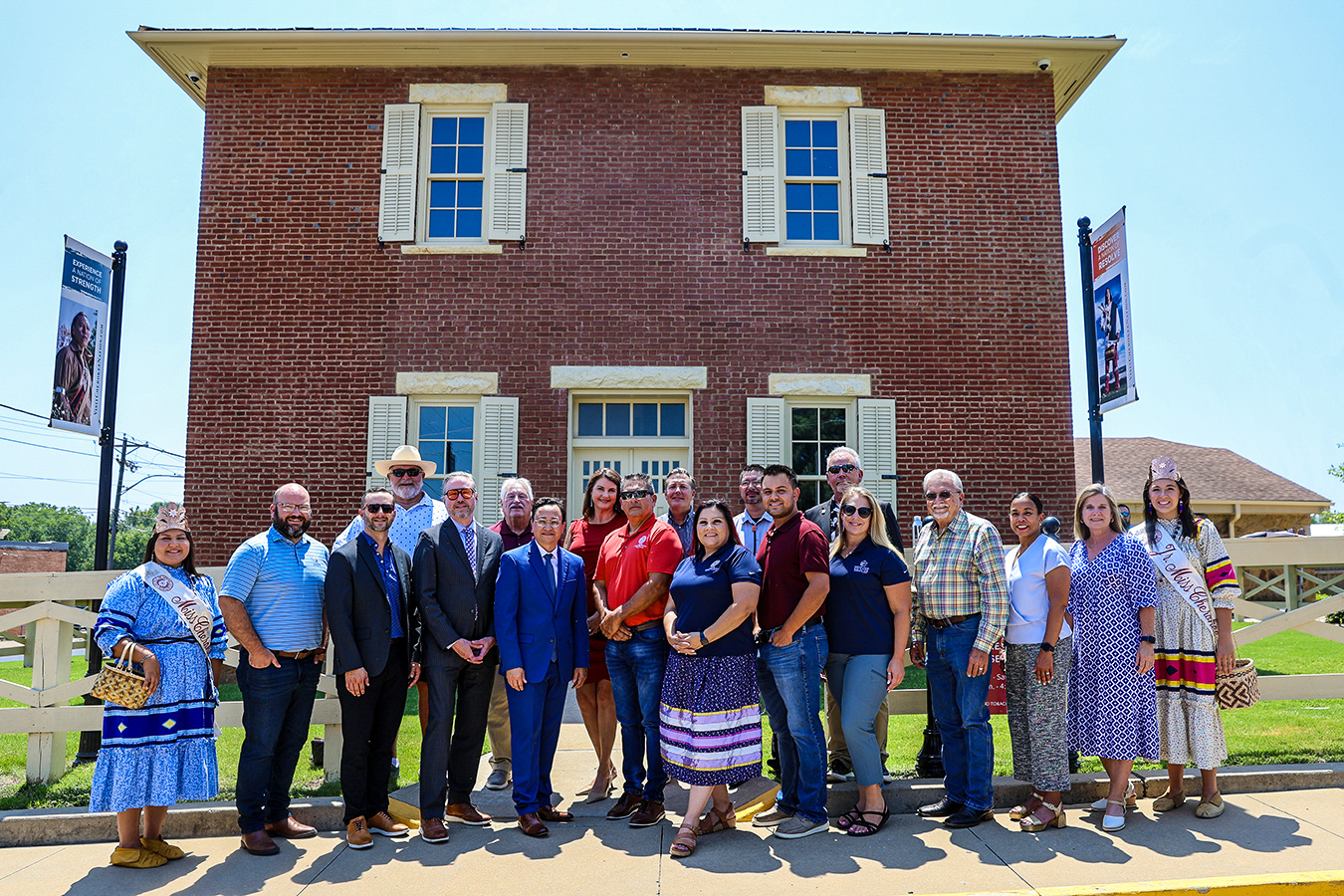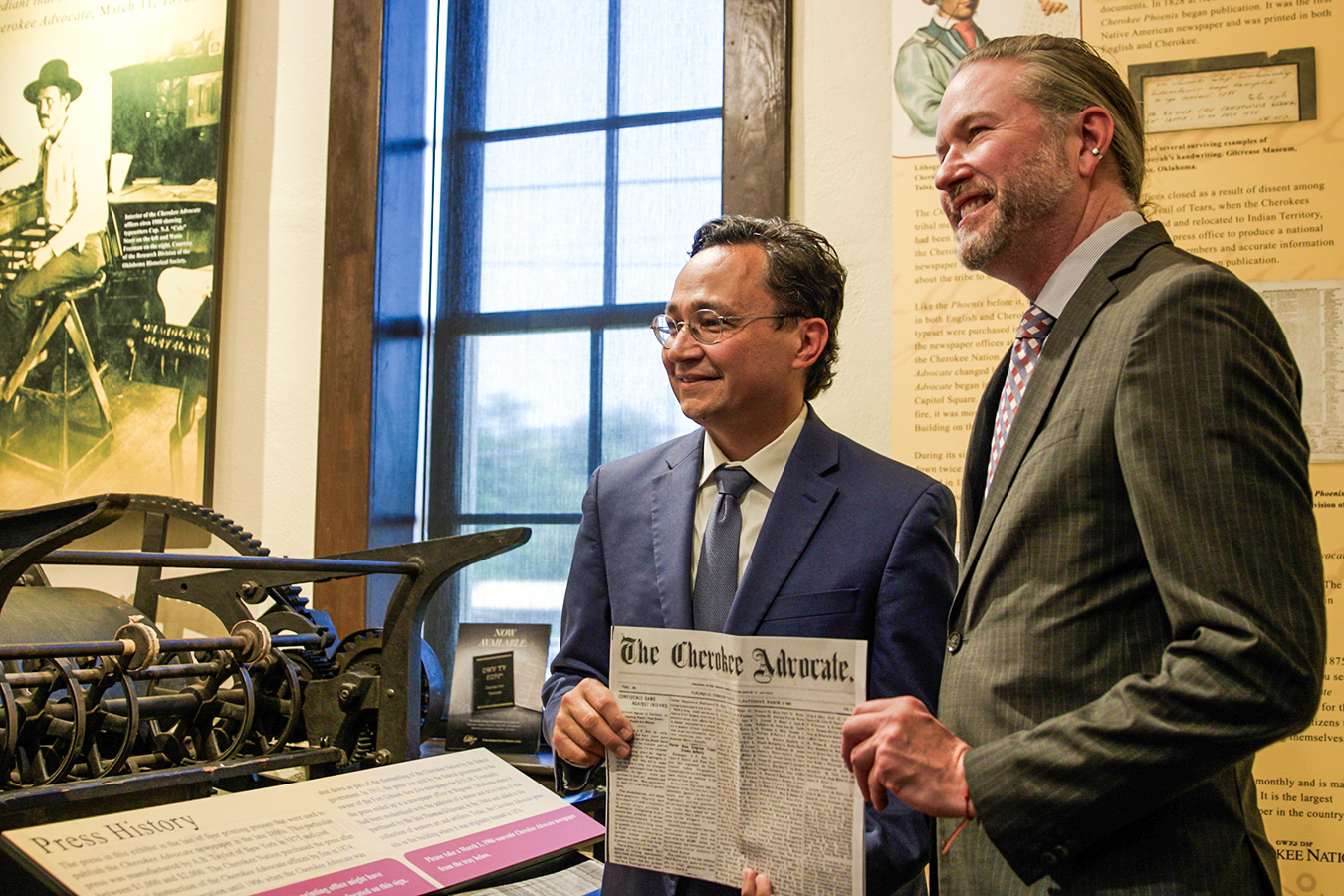Indianz.Com > News > Chuck Hoskin: Cherokee Nation reclaims ownership of historic printing press

Power of the press, storytelling at heart of repatriation effort
Monday, August 12, 2024
Cherokee Nation
The Cherokee Nation’s story contains more than our fair share of chapters where we struggled for survival. And yet with the support and sympathy from our allies, we continue to persist. We’ve faced forced removal from ancestral lands, health crises, loss of land and the power to self-govern, as well as a hostile federal government time and again.
More importantly, our history overflows with stories about finding strength and resolve within ourselves and our neighbors. In our darkest hours, we leaned into our intellect. We relied on diplomacy against harrowing odds and prevailed, creating one of the world’s greatest democracies in the process.
To build and maintain our democracy, we wielded the power of the written word, shaping our destiny through communication and rhetoric. We dared the United States to live up to its highest ideals while drafting our own. The development of Sequoyah’s Cherokee syllabary played a critical role in the advancement of our ability to communicate and remains a cornerstone of Cherokee culture.
Journalism is an important aspect of free-speech exercise. It works alongside our three-branched government as a counterpart to our system of checks and balances. The free press, often referred to as the fourth branch of government, is core to our Cherokee story. As we coalesced into a governmental institution, so did the Cherokee press.

Gilcrease Museum has returned to the Cherokee Nation the 149-year-old printing press once used to publish the Cherokee…
Posted by Cherokee Nation on Tuesday, August 6, 2024
Chuck Hoskin Jr.
is the 18th elected Principal Chief of the Cherokee Nation, the largest Indian
tribe in the United States. He is only the second elected Principal Chief of the
Cherokee Nation from Vinita, the first being Thomas Buffington, who served from
1899-1903. Prior to being elected Principal Chief, Hoskin served as the tribe’s
Secretary of State. He also formerly served as a member of the Council of the
Cherokee Nation, representing District 11 for six years.
Search
Filed Under
Tags
More Headlines
Chuck Hoskin: Cherokee Nation reclaims ownership of historic printing press
Native America Calling: Navajo Nation clashes with new uranium mining push
Cronkite News: Breakdancing debuts at 2024 Olympic games in Paris
Native America Calling: Democratic vice presidential pick puts new spotlight on Minnesota
DVIDS: Army Corps meets with tribes in southern California
Shakopee Mdewakanton Sioux Community hosts annual powwow
Indigenous Journalists Association selects all women executive committee
Howard Center: Predators go online to exploit new victims
Cronkite News: Undocumented migrants seek voice in elections
Michigan State University News: Funding continues work for Indian Child Welfare Act
Native America Calling: How Māori filmmakers are improving representation
Native America Calling: The expense people don’t like to think about
Native America Calling: Wildfire threat increases in the West
Alaska Beacon: Native Village of Eklutna moves forward with gaming facility
Oglala Sioux Tribe calls fatal powwow shooting an ‘isolated incident’
More Headlines
Native America Calling: Navajo Nation clashes with new uranium mining push
Cronkite News: Breakdancing debuts at 2024 Olympic games in Paris
Native America Calling: Democratic vice presidential pick puts new spotlight on Minnesota
DVIDS: Army Corps meets with tribes in southern California
Shakopee Mdewakanton Sioux Community hosts annual powwow
Indigenous Journalists Association selects all women executive committee
Howard Center: Predators go online to exploit new victims
Cronkite News: Undocumented migrants seek voice in elections
Michigan State University News: Funding continues work for Indian Child Welfare Act
Native America Calling: How Māori filmmakers are improving representation
Native America Calling: The expense people don’t like to think about
Native America Calling: Wildfire threat increases in the West
Alaska Beacon: Native Village of Eklutna moves forward with gaming facility
Oglala Sioux Tribe calls fatal powwow shooting an ‘isolated incident’
More Headlines